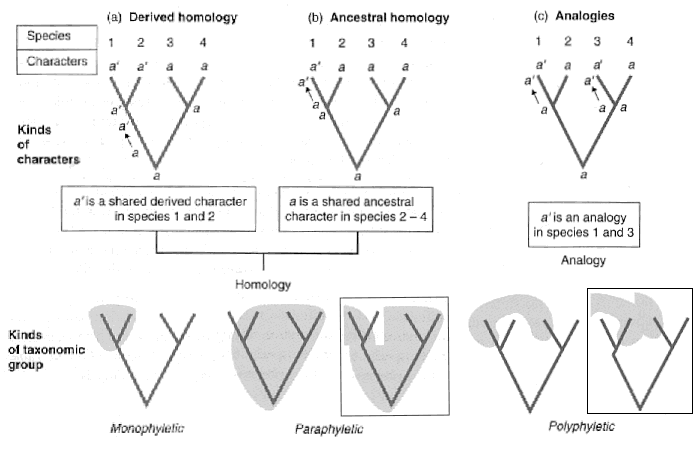
Different kinds of characters and taxonomic groups (after Ridley 1996)

"Homologies are characters shared between species that were present in the common ancestor. They can be derived or ancestral. (a) Shared derived homologies are found in all descendants of the common ancestor, and are distributed in monophyletic groups. (b) Shared ancestral homologies are found in some, but not all, descendants of the common ancestor, and are distributed in paraphyletic groups. (c) Analogies (convergent characters) are characters shared between species that were not present in the common ancestor; analogies fall into polyphyletic groups...." (Ridley 1996)
The paraphyletic groups contains the common ancestor, the polyphyletic group does not. The pattern in either group, that similar taxa are contiguous, as shown by the gray shading, is an accident of the way the branching diagram is drawn. By rotating a node in either diagram, as shown in the inset boxes, a paraphyletic taxon can be made to appear non-contiguous, or polyphyletic taxa can be made to appear contiguous.